
By Lauren Renteria, Wild Stew Field Crew Member
This week, the Wild Stew Field Crew traveled to the edge of Arizona to work at Paria Beach in the Glen Canyon National Recreation Area and Grand Canyon National Park. There, we took on one of our biggest projects yet: clearing 5 acres of brush and logs from a prescribed burn area and planting more than 100 small trees along the beach. That meant we needed all hands on deck. This hitch we welcomed two new crew members to the team, Nizhoni Baldwin and Sam Baggenstos, and welcomed back Wild Arizona’s Lead Biologist Taylour Stephens and Conservation Associate Jordan Zweig to the field.
The first two days proved to be dirty and exhausting work. The team split into pairs, one swamper and one sawyer, and tore our way through the leftovers of hundreds of burned tamarisk—which are invasive to the area—scattered throughout the ash-laden beach. Once our cutting mission was complete, we brought in the heavy machinery. This week, we were joined by Wild Arizona’s Deputy and Stewardship Director Brian Stultz, who moved thousands of pounds of cut vegetation with a skid steer on the work site. He placed the smaller branches and brush into a nearby gully to help control erosion in the area and laid the larger logs out which we cut up for local communities to use as firewood.
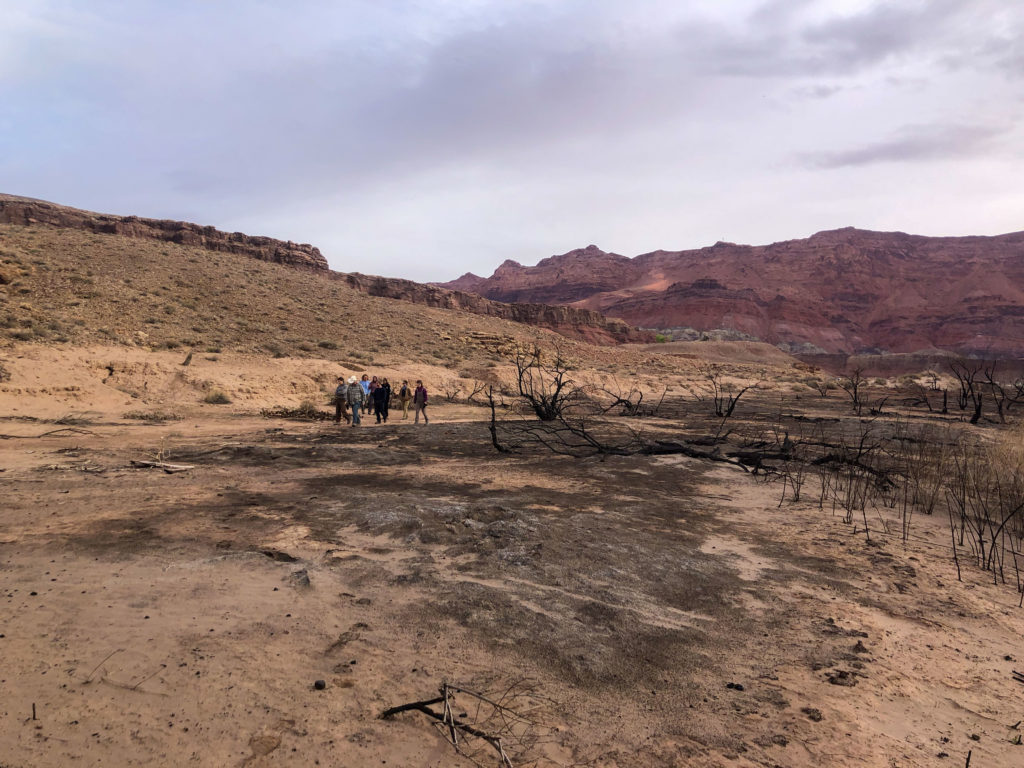
The crew walks the burned project area. Photo by Jonathan Patt. 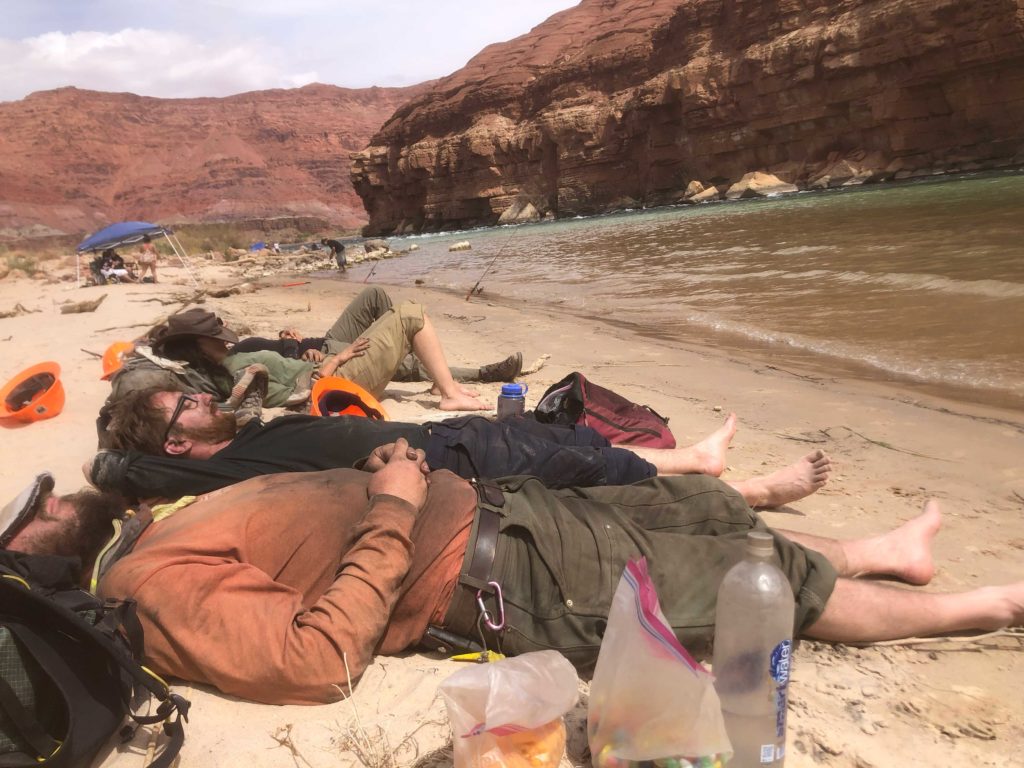
A well-deserved nap during the crew’s lunch break on the beach. Photo by Dexter Kopas.
Paria Beach is unlike any other worksite we’ve been to so far. It is a special place that highlights Arizona’s impressive geology and biological diversity in just a few acres. It’s also a community space where families, anglers, nature lovers and boaters can come together and enjoy some of what the Grand Canyon State has to offer. The beach is just downstream of where the Paria River and Colorado River converge and create the first riffle boaters encounter on their journey down the Colorado following their launch from Lee’s Ferry.

But, perhaps most importantly, it’s also home to thousands of years of indigenous history. That’s why, throughout the project, we were accompanied by two archeologists with the National Park Service, who advised us on where to drive the skid steer and how we could make sure to protect nearby archeological sites and artifacts.
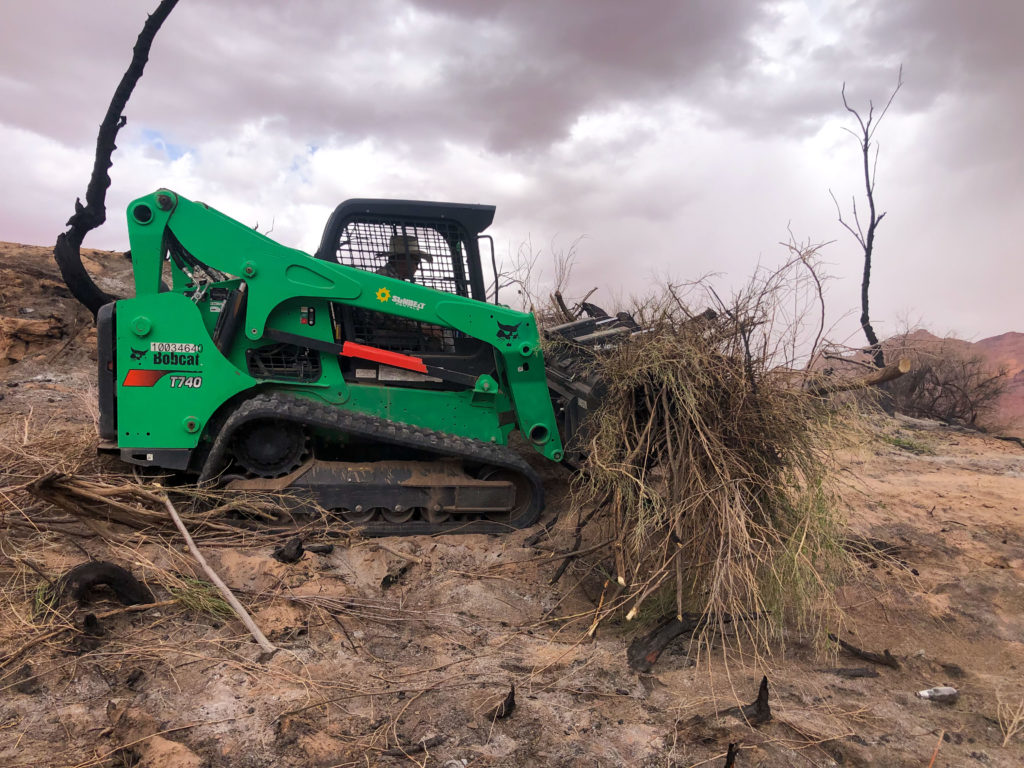
Brian hauling brush with the skid steer. Photo by Jonathan Patt. 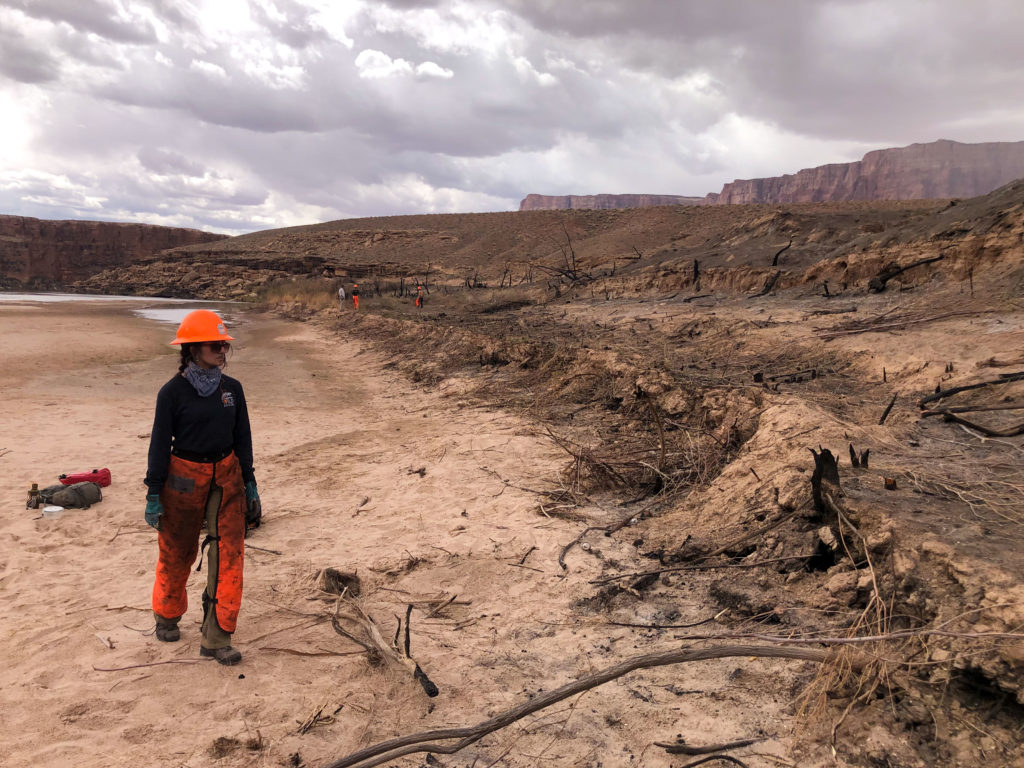
Lauren swamping along the beach as the rest of the crew clears out vegetation in the background. Photo by Jonathan Patt.
With that in mind, we started phase two of our mission: We used the skid steer and an auger to dig dozens of holes in preparation to plant native Goodding’s willow and cottonwood trees to restore the area. Larry Stevens, Wild Arizona’s senior ecologist, joined us in the field to help find and cut branches for planting from mature trees nearby, as well as providing potted trees that had been grown nearby. Though some of the plants will not survive, those that do will provide a richer habitat for local bird species, shade for beach visitors and improve overall health of the area, Stevens said.
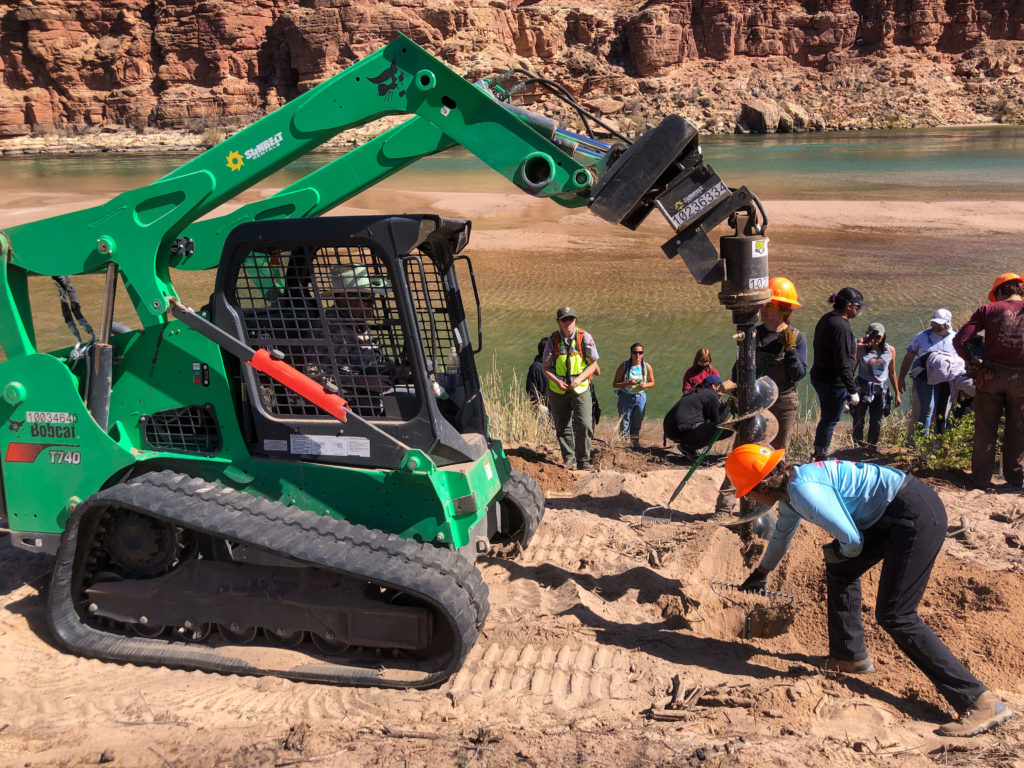
Nizhoni helps Brian dig one of the first holes. Photo by Jonathan Patt. 
Students from Page High School plant cottonwoods. Photo by Jonathan Patt.
With some holes dug and branches cut, we were ready to start planting. Students from a high school in Page, Arizona joined the crew Friday, April 1, and got their hands dirty clearing trash from the beach, cutting branches to plant and fence wire to protect the growing trees from hungry river beavers.
By Tuesday, we had planted and fenced in 148 trees along the beach and renaturalized our worksite to allow the wind and weather to obscure any remaining tracks from the skid steer.
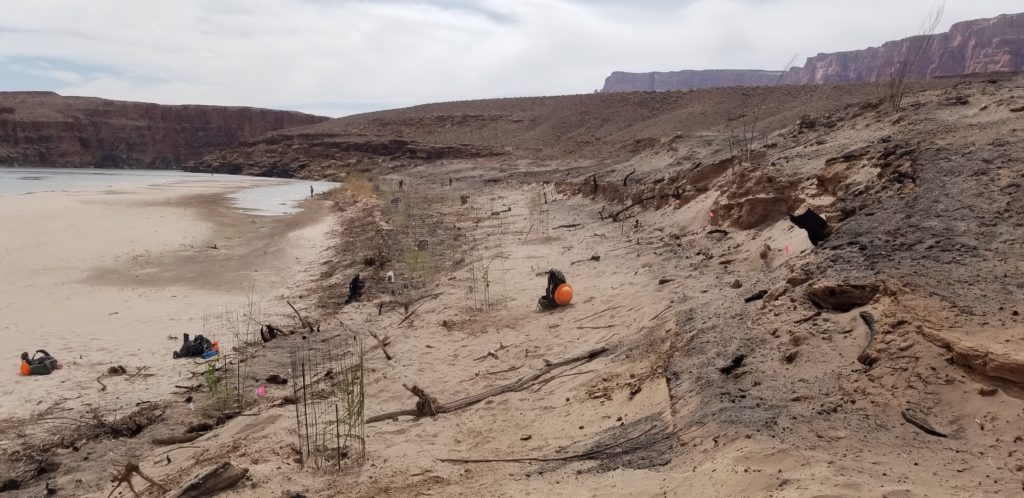
The crew wraps up planting trees along Paria Beach. Photo by Brian Stultz. 
The Wild Stew Field Crew and more celebrate the end of their project at a nearby restaurant. Photo by Brian Stultz.
It will take years to see the long-term effects of the project but birds have already started to show interest in the newly planted trees. It’s just a matter of time for the beach to heal from the burn and invasive species that once lived there.
Next hitch, the crew returns to the Mt. Wrightson Wilderness to pick up where we left off on the Old Baldy Trail, and will be hosting a volunteer event on Saturday, April 16. After, we’ll celebrate the Highline Trail Restoration Initiative on Saturday, April 23 to install new kiosks and benches at the Pine Trailhead. This event is open to the public and we hope to see everyone there!








